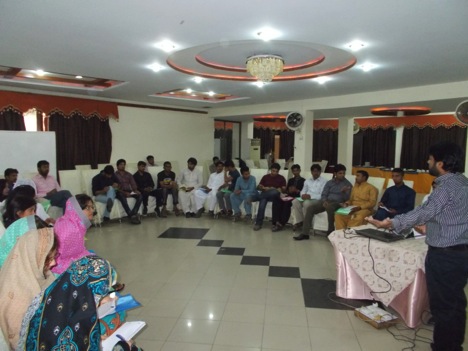Five proposals and one commitment
The synthetic data presented in the document below show how the common perception of migratory phenomena is deformed by an improper reading of reality, the extent of which is often amplified by the deforming lens of mismanagement and instrumentalisation for electoral purposes. On the basis of this observation, it is important:
1) Not to accept the rhetoric of immigration as an unstoppable wave of African population impoverished or eradicated by climate change. The numbers say more and we do not see how large masses of migrants could arrive in the future, especially from the poorest areas;
2) Do not confuse immigration and asylum, and do not mix landings and immigration. If the amorphous and feared mass of abstractly understood immigration is segmented and the focus is on well-identified groups, the issues become clearer and more manageable. We will then have to talk about mobile European citizens, students, nurses, family assistants, investors, people working in occupations left uncovered by Italians, people fleeing wars and persecutions. At the end of the exercise, it will be noticed that the uncontrollable and feared immigration will remain very little;
3) to avoid an overload of the asylum channel, increase the possibilities of entry for work in Italy, at least seasonal. Countries such as Germany and Japan have recently expanded the possibilities of work permits and the United States has also increased the number of visas for seasonal work;
4) to strengthen the solution of humanitarian corridors and in general the possibilities of resettlement of refugees from countries of first asylum. Here some religious organizations are active, Catholic and Protestant, in collaboration with numerous local communities. Their commitment must be encouraged and supported;
5) Italy should join the Global Compact for orderly, safe and regular migration.
In all its forms, national and local, Meic undertakes to carry out study, meeting and service initiatives:
– to help the understanding of migratory phenomena, in particular with regard to those fleeing from humanly unsustainable situations,
– to create and share forms of hospitality,
– to create a culture of listening and mutual respect,
– to generate experiences of social cohesion, following the example of some Meic groups that for years have been developing or participating in important cultural, social and ecclesial projects.
The numbers of the phenomenon
Migrations in the world
There are 257.7 million international migrants in the world, certainly growing in absolute terms (173 million in 2000), but very little in percentage terms. In fact, they represent 3.4% of the world’s population, slightly more than the 2.9% of the now distant 1990. Therefore, almost 97% of human beings do not move from their country of origin, despite the problems they have to face every day in many areas of the world. Moreover, 111.7 million have moved to countries classified by the UN as developing, and only 146 million have moved to developed countries. A large proportion of the flows travel along the South-South route, and there is also no lack of North-South migration, just as among the entries into high-income countries an important component comes from other countries of the global North. There is no evidence of biblical exodus from Africa or other low-income regions to Europe. A second important figure refers to the gender of international migrants: 48.4% are women. Excepted Africa, the majority of migrants would be women.
Migration in Italy
Coming to the Italian case, the salient datum is the substantial stabilization of the immigrant population from four years to this part: 5.33 million according to the Dossier Idos, equal to 8.5% of the population. To these should be added an estimate of almost 500,000 immigrants in irregular conditions (ISMU Foundation), whose incidence (9.7%) is lower than that of the first decade of this century (55.9% in 2002). Migration was not stopped by the reduction in landings promoted by the last two governments, but it had begun to fall a long time earlier, especially because of the reduction in employment opportunities.
It is a persistent misunderstanding that confuses landings, refugees and immigrants. In Italy the rules provide for 21 types of residence permits, not counting those who do not need any permit to enter, look for work and stay: typically citizens of other EU countries (currently about 1.5 million). The stabilization of the numbers of immigrants depends in part on naturalizations, which have also taken on larger dimensions in Italy in recent years: 200,000 in 2016, about 150,000 in 2017. But above all, the long 2008-2015 recession and the too timid recovery of recent years have had an impact.
Together with stabilisation, the other important figure concerns the composition of the immigrant population. The latest data also take into account the recent arrivals of asylum seekers from Africa (about 350 people).The figures for the number of recognised refugees and asylum seekers awaiting a reply according to the UNHCR) confirm a picture that is far removed from current representations: immigrants residing in Italy are mainly women (52%), mainly Europeans (50.9%, mostly EU citizens: 30.4% of the total), mainly from countries with a Christian cultural tradition: here the estimate is more uncertain, but the figure made public speaks of 57.5% of Christians and 28.2% of Muslims (Caritas-Migrantes).
Refugees
As for refugees, the majority (40 million out of 68) are internally displaced persons. Of those crossing a border, 85% are hosted in developing countries. Of the top ten host countries, the only one in the EU is Germany, with about one million refugees. Lebanon receives 164 refugees per 1000 inhabitants, excluding Palestinians, Italy about 6.
Immigration and finances of the state.
Are immigrants a burden or a resource for the public system? There are two key figures. The first is demographic: the over 65s are only 4% of the immigrant population. Their impact on pension and health expenditure is therefore modest, taking into account that health expenditure in the last year of life of people is more substantial than that of the previous life. The second figure is employment: 2.4 million immigrants have regular employment (10.5% of total employment), and are therefore subject to tax and social security contributions. Even taking into account the expenses that immigration entails, among which the reception of refugees stands out, the positive balance in favour of the State is considerable: between 1.7 and 3 billion euros. In the labour market, two other figures stand out: in domestic services (domestic helpers and family carers, commonly known as carers), immigrants account for 70.6% of the total. There are 587,000 self-employed immigrants (9.6% of the total). For example, they make up 56% of itinerant traders.
The new generations of immigrants
The children of immigrants in Italy are almost 1.3 million, and 826,000 foreign students are included in the Italian school system. Two aspects deserve to be underlined. The first concerns also in this case the almost cessation of growth. The second concerns the fact that 60% of these “foreign” pupils were born in Italy, even if the situation varies greatly depending on the school order, ranging from 85% of kindergarten to 27% of upper secondary school. The presumed language difficulties at the beginning of the school career, for example, should be largely overcome by now. On the other hand, there is still a problem of early school leaving after the age of 17, when the spill concerns one in three young foreigners, compared to 15% for students with Italian citizenship.




Leave A Comment
You must be logged in to post a comment.